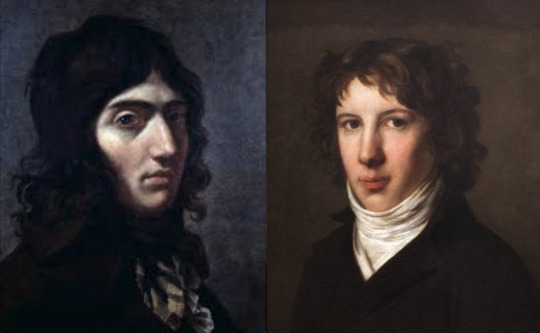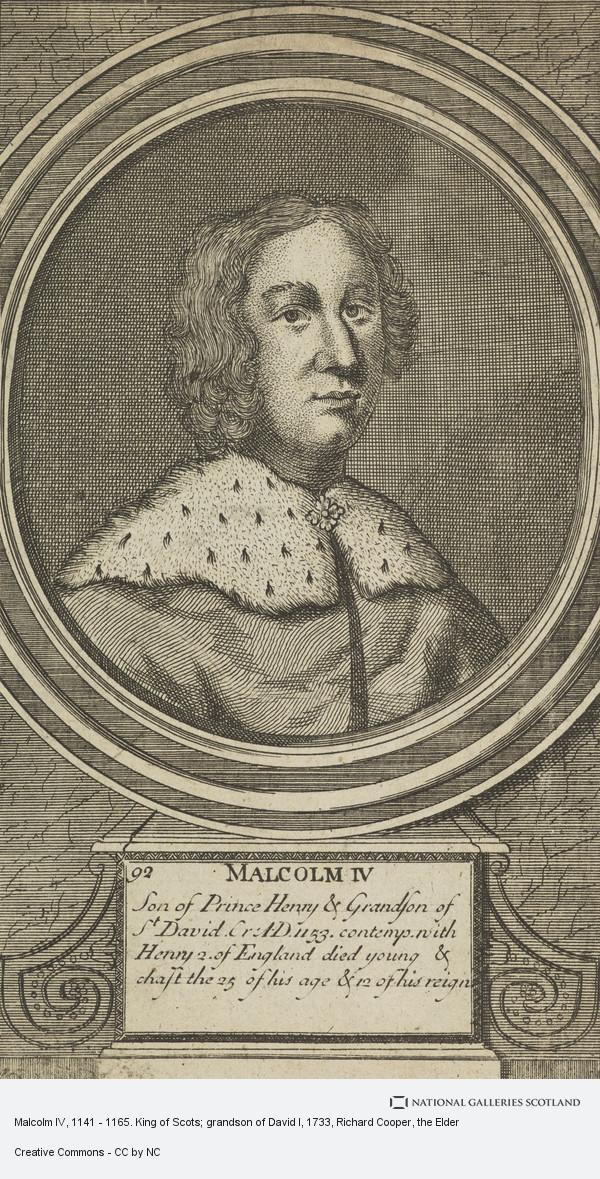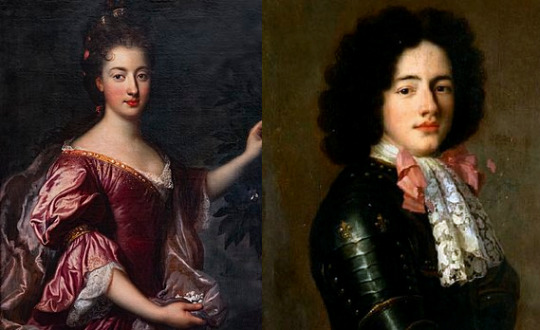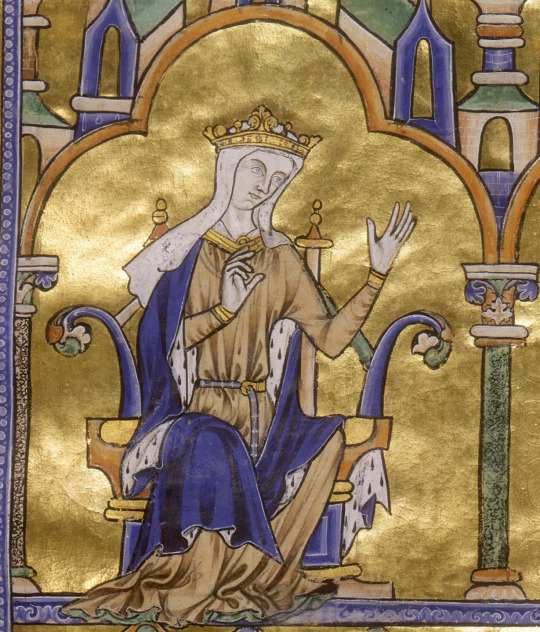#vermandois
Video
youtube
THE BASTARD PRINCE OF VERSAILLES (Available Sept. 6, 2023)
#youtube#will bashor#gay history#gay versailles#gay prince#gay royals#bastard prince#bastard prince of versailles#bastard children of Louis XIV#Louis de bourbon#count of vermandois#vermandois#lgbtq#gay novel#lgbtq novel#historical novel#gay historical novel#lgbtq historical novel
0 notes
Text

Bohain en Vermandois.
les nouveaux quartiers.
18 notes
·
View notes
Text
Loyal brothers
The Capetian kings found their brothers no more difficult than their sons. The exceptions were the brothers of Henri I, Robert and Eudes, but thereafter the younger Capetians developed a tradition of loyalty to their elders. Robert of Dreux, the brother of Louis VII, who was the focus of a feudal revolt in 1149, was only a partial exception, for at that date the king was still in the East, and the real object of the hostility was the regent Suger. By contrast, Hugh of Vermandois was described by contemporaries as the coadjutor of his brother, Philip I. St Louis's brothers, Robert of Artois, Alphonse of Poitiers, and Charles of Anjou, never caused him any difficulties, and the same can be said of Peter of Alençon and Robert of Clermont in the reign of their brother Philip III. Even the disturbing Charles of Valois, with his designs on the crowns of Aragon and Constantinople, was always a faithful servant to his brother Philip the Fair, and to the latter's sons. The declaration which he made when on the point of invading Italy in the service of the Pope is revealing:
"As we propose to go to the aid of the Church of Rome and of our dear lord, the mighty prince Charles, by the grace of God King of Sicily, be it known to all men that, as soon as the necessities of the same Church and King shall be, with God's help, in such state that we may with safety leave them, we shall then return to our most dear lord and brother Philip, by the grace of God King of France, should he have need of us. And we promise loyally and in all good faith that we shall not undertake any expedition to Constantinople, unless it be at the desire and with the advice of our dear lord and brother. And should it happen that our dear lord and brother should go to war, or that he should have need of us for the service of his kingdom, we promise that we shall came to him, at his command, as speedily as may be possible, and in all fitting state, to do his will. In witness of which we have given these letters under our seal. Written at Saint-Ouen lès Saint-Denis, in the year of Grace one thousand and three hundred, on the Wednesday after Candlemas."
This absence of such sombre family tragedies as Shakespeare immortalised had a real importance. In a society always prone to anarchy the monarchy stood for a principle of order, even whilst its material and moral resources were still only slowly developing. Respectability and order in the royal family were prerequisites, if the dynasty was to establish itself securely.
Robert Fawtier - The Capetian Kings of France
#xii#xiii#xiv#robert fawtier#the capetian kings of france#henri i#robert i de bourgogne#louis vii#robert i de dreux#abbé suger#philippe i#hugues de vermandois#louis ix#robert i d'artois#alphonse de poitiers#charles i d'anjou#philippe iii#pierre d'alençon#robert de clermont#philippe iv#charles de valois
8 notes
·
View notes
Text
'Aenor' is the prettiest medieval name ever
#forever crying that so many historical 'Aenors' are now known as 'Eleanors'#speaking of:#@ Aenor (/Eleanor) de Vermandois...hi 👀❣️#my post
1 note
·
View note
Text


Princess Anne, The Double Duchess (1825-1906)
read more about her below!
Princess Anne was the third child of Queen Mary II and Prince Charles, the Earl of Statford. Although the Queen had resented her daughter for her gender, her father Prince Charles showered the princess with love and affection. Queen Mary distanced herself from her children after the birth, with historians agreeing she most likely suffered from post-partum depression. Princess Anne grew up to be a lively and joyful girl who enjoyed reading literature and had a passion for dance. Princess Anne married Prince Jean of Magnolia, the Duke of Claremont in 1849. The marriage was arranged as a part of Queen Mary’s agenda to improve relations between the two former rival countries. Anne disliked the stuffy opulent court of Magnolia and longed for a simpler life in Windenburg. Princess Anne struggled to integrate well into Magnolian society and had an infamous rivalry with her sister-in-law, Crown Princess Marie Louise. Princess Anne loathed her husband, who paid little attention to his wife. It was rumored for many years that the Prince had an affair with his secretary, the Baron of Aubin. Princess Anne had two miscarriages before giving birth to a son, Prince Philippe, Count of Vermandois in 1855. While Princess Anne was visiting her mother at the San Myshuno Palace in 1862, her husband died, leaving the young princess a widow. Princess Anne decided to return to San Myshuno with her young son and lived with her mother at Statford Castle. Princess Anne would elope with her childhood friend, James Montague, 8th Duke of Vermont in 1864. The couple would have a happy marriage which produced a daughter, Lady Mary Montague. Social circles in San Myshuno High Society dubbed the princess the "double duchess". For the first year and a half of marriage, the queen refused to speak to Anne who in turn refused to attend court. However, her younger sister, Princess Mary, was able to mend the relationship between them. Although the Queen was opposed to the match initially, she later described the Duke as "her favorite son-in-law". Princess Anne spent most of her time away from court, and instead in the countryside of Victoria. Princess Anne lived a happy and fulfilled life and died at her country estate, Vermont Park in 1906 surrounded by her grandchildren.
#statfordlegacy#sims4#legacy#sims#royallegacy#royalty#ts4 royals#ts4#ts4 royal#ts4 legacy#ts4 render#sims 4 render#sims render#sims 4 edit#ts4 edit#sims edit#extras
47 notes
·
View notes
Text
Saint-Just's letter to Camille Desmoulins in (May?) 1790
He mentions the Assemblée de Chauny, which took place in May 1790 according to this site.
ORIGINAL FRENCH
Monsieur,
Si vous étiez moins occupé, j'entrerais dans quelques détails sur l'Assemblée de Chauny, où se sont trouvés des hommes de toutes trempes et de tout calibre. Malgré ma minorité, j'ai été reçu. Le sieur Gellé, notre confrère au bailliage de Vermandois, m'avait dénoncé. On l'a chassé par les épaules. Nous avons vu là vos compatriotes MM. Saulce, Violette et autres, dont j'ai reçu beaucoup de politesse. Il est inutile de vous dire (car vous n'aimez pas la sotte louange) que votre pays s'enorgueillit de vous.
Vous avez su avant moi que le département était définitivement à Laon. Est-ce un bien, est-ce un mal pour l'une ou l'autre ville ? Il me semble que ce n'est qu'un point d'honneur entre les deux villes, et les points d'honneur sont très peu de chose presqu'en tout genre.
Je suis monté à la tribune, j'ai travaillé dans le dessein de porter le jour dans la question du chef-lieu : mais je ne suivis rien ; je suis parti chargé de compliments comme l'âne de reliques, ayant cependant cette confiance qu'à la prochaine législature je pourrai être des vôtres à l'Assemblée nationale.
Vous m'aviez promis de m'écrire, mais je prévois bien que vous n'en aurez pas eu le loisir. Je suis libre à l'heure qu’il est. Retournerai-je auprès de vous ou resterai-je parmi les sots aristocrates de ce pays-ci ?
Les paysans de mon canton étaient venus, alors de mon retour de Chauny, me chercher à Manicamp. Le comte de Lauraguais fut fort étonné de cette cérémonie rusti-patriotique. Je les conduisis tous chez lui pour le visiter. On nous dit qu'il est aux champs et moi cependant je fis comme Tarquin ; j'avais une baguette avec laquelle je coupai la tête à une fougère qui se trouva près de moi, sous les fenêtres du château, et sans mot dire nous fines volte-face.
Adieu, mon cher Desmoulins. Si vous avez besoin de moi, écrivez-moi. Vos derniers numéros sont pleins d'excellentes choses. Apollon et Minerve ne vous ont point encore abandonné, ne vous en déplaise. Si vous avez quelque chose à faire dire à vos gens de Guise, je les reverrai dans les huit jours à Laon où j'irai faire un tour pour affaires particulières.
Adieu encore, gloire, paix, et rage patriotique.
Saint-Just.
Je vous lirai ce soir, car je ne vous parle de vos derniers numéros que par ouï-dire.
ENGLISH TRANSLATION
I found a translation here, which I used as a basis for mine, but there are some mistakes I corrected and I made some stylistic changes.
Monsieur,
If you were less busy, I would give you more details about the Assembly of Chauny, where one can find men of considerable calibre and quality. I was received in spite of my minority. Sieur Gellé, our compatriot from the bailliage of Vermandois had denounced me. He was grabbed by the shoulders and thrown out. We saw your compatriots, M. Saulce, M. Violette and others, by whom I was received with great courtesy. There is no point telling you (because you don't like foolish praise) that your region is proud of you.
You have known before I did that the département is definitely fixed at Laon. Is that good or is that bad for one or other of the towns? It seems to me that it is no more than a point of honour between the two towns and points of honour are of little importance.
I took the tribune; I worked with the intention of carrying the [order of the] day on the question of the chef-lieu: but I did not follow on; I left, weighed down with compliments like the donkey burdened with relics (1), having however the confidence that at the next legislature I could be among you at the National Assembly.
You had promised to write to me, but I can well anticipate that you had no such leisure. I am free as of now. Should I return to you or remain amongst the foolish aristocrats in this part of the country?
The peasants from my canton came, when I returned from Chauny, to look for me at Manicamp. The Comte de Lauraguais was greatly astonished by this rustico-patriotic ceremony. I led them all to his home for a visit. They said that he was out in the fields and I, however, did like Tarquin, I had a cane [baguette (2)] with which I cut off the head of a nearby fern, beneath the windows of the castle, and without a word we left and returned.
Farewell, my dear Desmoulins. If you have need of me, write to me. Your latest issues are full of excellent things. Apollo and Minerva have not yet abandoned you, whether you like it or not. If you have anything to say to your people in Guise, I will be seeing them again within the next eight days in Laon where I will be going for particular matters.
Farewell again, glory, peace and patriotic rage.
Saint-Just
I will read you this evening, since I only tell you about your recent issues from hearsay.
(1) This is a reference to a fable by La Fontaine.
(2) The baguette (direct translation: stick - the word existed before the bread style!) was a very thin cane, very fashionable to carry at the time. You can see some examples here. I'm not sure how he managed to cut a plant with it though... I've never tried to do that lol. So I don't know if it implies it was a sword-cane or if it was thin enough to do it on its own.
He compares his gesture to that of Lucius Tarquinius Superbus who, according to Livy, silently cut off the heads of the tallest poppies as a demonstration to what his son had to do.
(This is, by the way, the scene we see reproduced at the beginning of Saint-Just et la force des choses, and why they changed the fern to poppies - so the allusion would be clearer.)
42 notes
·
View notes
Note
Can you tell me the story of the relationship between saint-just and desmoulins? . ..
Because I couldn't understand it properly so yeah ...

The first connection between Desmoulins and Saint-Just is from 2 January 1790, when the former publishes an annonce for the latter’s recently published Organt in number 6 of Révolutions de France et de Brabant:
Organt, poem in twenty verses, with this epigraph: Vous, jeune homme, au bon sens avez-vous dit adieu ? And this preface: J’ai vingt ans, j’ai mal fait, he pourrai faire mieux.
A few months later, we find the following letter from Saint-Just to Desmoulins. It is undated, but can be traced to May 1790. The letter makes Desmoulins, alongside Robespierre, who he wrote a letter to the following year, the only revolutionaries Saint-Just is confirmed to have contacted prior to heading to Paris in 1792. Unlike in the case of Robespierre however, the letter to Desmoulins implies a correspondence was actually picked up between the two:
Monsieur,
If you were not so busy I would tell you some more details about the Chauni assembly where one can find men of considerable calibre and quality. I was received in spite of my youth. Sieur Gelli, your compatriot from Vermandois had denounced me. He was thrown out bodily. We saw your compatriots, M. Saulce, M. Violette and others, by whom I was received with great courtesy. There is no point telling you (because you are not fond of foolish praise) that your region is proud of you. You will have known before I did that the department is fixed at Laon. Is that good or is that bad for one or other of the towns? It seems to me that it is no more than a point of honour between the two towns and points of honour are of little importance. I took the tribune; I worked with the intention of carrying the day on the question of the chief place but I did not follow on, I left, weighed down with compliments like a donkey burdened with relics, having, however, the assurance that at the next legislature I could be with you in the national assembly. You had promised to write to me, but I see clearly that you will not have the time. I am free as of now. Should I return to you or remain amongst the foolish aristocrats in this part of the world. At the time of my return from Chauni the peasants from my region came to look for me at Manicamp. The Comte de Lauraguais was greatly astonished by this rustic-patriotic ceremony. I led them all to his house for a visit. They said that he was out in the fields, however, like Tarquin, I had a rod with which I cut off the head of a nearby fern beneath the window of the castle and without a word we made a volte face. Farewell my dear Desmoulins. Write to me if you have need of me. Your latest issues are full of excellent things. Apollo and Minerva are still with you and are not displeased. If you have anything to say to your people in Guise I will be seeing them again in eight days’ time from Laon where I will be going on specific business.
Goodbye again: glory, peace and patriotic rage.
Saint-Just
I will read you this evening since I have only spoken to you of your recent issues by saying yes.
Different feelings can however be found a year later, in a letter Saint-Just adressed to Villain Daubigny on July 20 1791 (it is dated 1792 in Oeuvres complètes de Saint-Just, but Saint-Just’s biographer Bernard Vinot points out that this is most likely an error, since all the events it makes allusions to took place the previous year):
…Go and see Desmoulins, embrace him for me, and tell him that he will never see me again, that I esteem his patriotism, but that I despise him, because I have penetrated his soul, and because he fears that I will betray him. Tell him to not abandon the good cause, and recommend it to him, because he does not yet possess the audacity of magnanimous virtue.
What exactly had happened between the two for Saint-Just to write this about Desmoulins is unknown. The same can be said about the question regarding where and when the meeting between them he alludes to here played out, since neither of them is confirmed to have left their respective towns in 1791.
Yet another year later, in September 1792, both Saint-Just and Desmoulins were elected deputies for the National Convention, meaning the former came to settle in Paris on Rue de Gaillon 7, around 2,5 km from the latter’s home on Rue du Théâtre 1 (today Rue de l’Odeon 28). Aside from the fact both were fervent montagnards, I have not been able to find any connection between them until the second half of the following year, with the release of Desmoulins’ Lettre de Camille Desmoulins, député de Paris à la Convention, August général Dillon en prison aux Madelonettes. In it, Saint-Just, who had accused Dillon of having been asked to lead an uprising to put the dauphin on the throne and declare Marie-Antoinette regent on June 2 1793, got described the following way in a footnote:
After Legendre, the member of the Convention who has the highest opinion of himself is Saint-Just. One can see by his gait and bearing that he looks upon his own head as the corner-stone of the Revolution, for he carries it upon his shoulders with as much respect and as if it was the Sacred Host. But what makes his vanity killing is, that some years ago he published an epic poem in twenty-four cantos entitled Argant [sic]. Rivarol and Champcenetz, from whose microscope, used in the interests of the Almanach des grands hommes, not a single verse, not a single hemistich in France has ever escaped, have in vain gone searching for this; they who have hunted up even the least little scrap of literature have not seen Saint-Just’s epic poem in twenty-four cantos. After such a misadventure, how can he show himself?
According to some sources, the ”he carries his head like the Sacret Host” comment was a reply to something Saint-Just had himself said about Desmoulins. Marcellin Matton published in 1834 an anecdote (which it is presumed he obtained from Desmoulins’ mother- or sister-in-law) in which Guillaume Brune has tea with the Desmoulins couple at the time of the numbers of the Vieux Cordelier being released. The following conversation would then have played out:
”…You [Brune said] are also read by Barère who recognizes himself; by Saint-Just, who promised to make you carry your head like Saint Denis.”
”That’s true,” [Desmoulins] replied, ”I remember it: it was a very bad joke, and my answer was much better. Have you seen my letter to Dillon? In the approach and posture of Saint-Just, we see that he regards his head as the cornerstone of the republic, and that he carries it on his shoulders with respect like a holy sacrament. Was I wrong, and do you think that for such a good joke he would want to kill me? I only ask him for one favor, and that is to wait until he has given a valid response.”
In 1851, the historian Nicolas Villiaume similarly claimed to have had the same story told to him multiple times by Desmoulins’ mother-in-law. Interestingly though, the ”I will make him carry his head like Saint Denis” comment already appeared in works dated 1816 and 1825 (in both cases without any source cited). There, it is instead portrayed as a response to Desmoulins having written ”Saint-Just carries his head like the Sacred Host” and not as the cause of it. In light of this, I think the idea of Saint-Just having actually said it is something that must be taken with a big grain of salt.
The things more reliable sources can tell us about Saint-Just’s attitude towards Desmoulins at the time are less overwhelming. He was away from Paris during much of the period where Desmoulins released and got in trouble for the Vieux Cordelier (from October 17 to December 4, December 10 to December 30, and finally January 22 to February 13), and when he was there during said period, I cannot find him recorded to have spoken about Desmoulins or his journal a single time. Saint-Just also went unmentioned in all of the six numbers of the Vieux Cordelier that were released during the time they were both alive.
When the Committee of Public Safety decided to strike down Desmoulins and the other ”dantonists,” it was however Saint-Just who, like in the previous case with the hébertists, got tasked with writing a report against them. Here he obtained the help of Robespierre, who prepared around 65 notes for him to use as material against them. In said notes, Robespierre presented Desmoulins as less guilty than Danton and Fabre, having instead been more of their minion, a version of the story Saint-Just then stuck to when finishing his Rapport sur la conjuration ourdie pour obtenir un changement de dynastie; et contre Fabre d’Églantine, Danton, Philippeaux, Lacroix et Camille Desmoulins:
Bad citizen (speaking of Danton), you have conspired, you said, two days ago, bad things about Desmoulins, an instrument that you have lost, and you attributed to him shameful vices. […] For six months, a plan of palpitation and anxiety has been hatched within the government. Every day we were sent a report on Paris; we were flexibly insinuated, sometimes imprudent advice, sometimes misplaced fears; the tables were calculated on the feelings that it was important to arouse in us, so that the government would move in the direction that suited criminal plots; Danton was praised there, Hébert and Camille Desmoulins were accredited, and all their projects were assumed to be sanctioned by public opinion, to discourage us. […] What shall I say of those who claimed to be exclusively the old Cordeliers? They were precisely Danton, Fabre, Camille Desmoulins, and the ministry, author of the reports on Paris, where Danton, Fabre, Camille and Philippeanx are praised, where everything is directed in their direction and in the direction of Hébert. Danton had directed the last writings of Desmoulins and Philippeaux. […] Camille Desmoulins, who was initially duped and ended up being an accomplice, was, like Philippeaux, an instrument of Fabre and Danton. It was said, as proof of Fabre's good nature, that when he was at Desmoulins' house at the time when he read to someone a writing in which he requested a committee of clemency for the aristocracy and called the Convention the court of Tiberius, Fabre started to cry. The crocodile cries too. As Camille Desmoulins lacked character, his pride was used. As a rhetorician, he attacked the revolutionary government in all its forms; he spoke brazenly in favor of the enemies of the Revolution, proposed a committee of clemency for them; showed himself to be very inclement towards the popular party; attacked, like Hébert and Vincent, the representatives of the people in the armies; like Hébert, Vincent and Buzot, he himself treated them as proconsuls. He had been the defender of the infamous Dillon, with the same audacity that Dillon himself showed, when at Maubeuge he ordered his army to march on Paris, and take an oath of loyalty to the king. He fought the law against the English; he received thanks in England, in the newspapers of that time. Have you noticed that all those who were praised in England have betrayed their fatherland here?
According to an anecdote published in the pamphlet À Maximilien Robespierre aux enfers (1795), released a few months after thermidor by Taschereau de Fargues and Paul-Auguste-Jacques, Saint-Just and Robespierre had wanted to denounce Desmoulins and the other dantonists before arresting them, but been downvoted by their colleagues:
Why should I not say that [the dantonist purge] was a meditated assassination, prepared for a long time, when two days after this session where the crime was taking place, the representative Vadier told me that Saint-Just, through his stubbornness, had almost caused the downfall of the members of the two committees, because he had wanted that the accused to be present when he read the report at the National Convention; and such was his obstinacy that, seeing our formal opposition, he threw his hat into the fire in rage, and left us there. Robespierre was also of this opinion; he believed that by having these deputies arrested beforehand, this approach would sooner or later be reprehensible; but, as fear was an irresistible argument with him, I used this weapon to fight him: You can take the chance of being guillotined, if that is what you want; For my part, I want to avoid this danger by having them arrested immediately, because we must not have any illusions about the course we must take; everything is reduced to these bits: If we do not have them guillotined, we will be that ourselves.
Regardless of whether this be true or not, on March 30, Saint-Just was one of eighteen men to sign the by Amar drafted arrest warrant for Danton, Delacroix, Philippeaux and Desmoulins, who were all arrested in the night. The next day at the Convention, Robespierre shut down Legendre when he suggested the accused be allowed to come and defend themselves before the Convention, after which Saint-Just entered the hall, mounted the rostrum and read out the act of accusation the two of them had worked out.
Receiving a copy of Saint-Just’s report in his cell at the Luxembourg prison, Desmoulins got around to preparing a defence. In it, he claimed the author of the report had personal reasons for wanting him dead. He also referred to him as ”Monsieur le Chevalier de Saint-Just,” a nicknamed previously used by the girondin Salle:
If I had gotten the chance to print in turn, if one hadn’t put me in isolation, if one had lifted the seals and if I had the paper neccesary to establish my defense, if one gave me only two days to make a number seven, imagine how I would confront M. the chevalier Saint-Just! Imagiene how I would convince him of the most atrocious slander ! But Saint-Just writes leisurely in his bath, in his bathtub, he plots my murder during fifteen days, while I have no place to put my writing desk and only a few hours to defend my life. What is this if not the the duel of the Emperor Commodus, who, armed with an excellent blade, forced his enemy to fight with a simple foil garnished with cork? […] I arrive at the part of the report which concerns me. In living memory, there is no example of such atrocious slander as this piece. And yet there is not a single person in the Convention that doesn’t know that Monsieur the former chevalier Saint-Just holds for me an implacable hatred for a slight joke that I allowed myself five months ago in one of my numbers. Bourdaloue said: Molière puts me in his comedy, I will put him in my sermon. I put Saint-Just in a giggly number, and he puts me in a guillotine report where there isn’t a single true word in my regard. When Saint-Just accuses me of being an accomplice of Orléans and Dumouriez, he shows well that he is a patriot of yesterday. Who denounced Dumouriez first of all, and before Marat and more vigorously than anyone else? Certainly one cannot deny that it was me? My Tribune des Patriotes exists, let Saint-Just read the portrait I there painted of Dumouriez six months before his treason in Belgium, he will see that I have never since added anything to this portrait. And Orléans who he makes me the accomplice of, who doesn’t know that I was the first to denounce him? That the only writings on this faction that the Jacobins have printed and distributed were written by me? Does Saint-Just no longer remember my Histoire des Brissotins? […] There are witnesses to the fact that the great republican Saint-Just, at the beginning of the Convention, said: Oh! They want a republic, she shall cost them dearly! There are witnesses to the fact the ambitious Saint-Just said: I know where I go.
In an unfinished and unsent letter written to Robespierre around the same time, Lucile Desmoulins too held Saint-Just as the main culprit behind her husband’s fate, arguing that he had misled their friend:
…As far from the insensibility of your Saint-Just as from his base jealousies, [Camille] recoiled in front if the idea of accusing a college comrade, a companion in arms. […] Robespierre, can you really complete the fatal projects which the vile souls that surround you no doubt have inspired you to? […] Had I been Saint-Just’s wife I would tell him this: the sake of Camille is yours, it’s the sake of all the friends of Robespierre!
A rumor claiming that Lucile had been sent money from the imprisoned Arthur Dillon conveniently arrived around the same time the trial against the indulgents started getting off the rails. In the afternoon of April 4, after the proceedings had been closed for the day, Saint-Just again mounted the rostrum at the Convention and revealed the discovery of this new conspiracy:
The public prosecutor of the revolutionary tribunal reported that the revolt of the guilty had caused the court proceedings to be suspended until the Convention had taken measures. You have escaped the greatest danger that ever threatened freedom: now all the accomplices are discovered, and the revolt of the criminals at the foot of justice itself. Intimidated by the law, the secret of their conscience; their despair, their fury, everything announces that the good nature they presented was the most hypocritical trap that had been set for the revolution. What innocent person has ever rebelled before the law? There is no need for any other proof of their attacks than their audacity. What! those whom we accused of having been the accomplices of Dumouriez and Orléans, those who only made a revolution in favor of a new dynasty, those who conspired for the misfortune and slavery of the people are at the height of their infamy! If there are men here who are truly friends of liberty, if the energy that suits those who have undertaken to liberate their country is in their hearts, you will see that there are no longer any conspirators on the front line, who, counting on the aristocracy with whom they have marched for several years, call upon the people the vengeance of the crime. No, liberty shall not recoil in front of her enemies; their coalition has been revealed. Dillon, who ordered his army to march upon Paris, has declared that the wife of Desmoulins had received money in order to promote a movement to assassinate the patriots and the Revolutionary Tribunal. We thank you for placing us in the position of honor; like you, we will cover the fatherland with our bodies. Dying is nothing, provided that the revolution triumphs; here is the day of glory; this is the day when the Roman senate fought against Catiline; This is the day to consolidate public liberty forever. Your committees respond to you with heroic surveillance. Who can refuse you his veneration in this terrible moment when you fight for the last time against the faction which was lenient towards your enemies, and which today finds fury to fight liberty?
After having heard Saint-Just’s report, the Convention used this new discovery to order ”that the Revolutionary Tribunal shall proceed with the instruction relating to the conspiracy of Lacroix, Danton, Chabot and others. The President shall make use of every means which the law permits to cause his authority and that of the Revolutionary Tribunal to be respected, and to repress every attempt on the part of the accused to trouble public tranquillity and to hinder the course of justice. It is decreed that all persons accused of conspiracy who shall resist or insult the national justice shall be outlawed and receive judgment on the spot.” This order became essential for getting the dantonists condemned to death the following day.
Saint-Just had however nothing to do with the actual arrest warrant for Lucile, signed the same day by Robespierre, Billaud-Varennes, C-A Prieur, Carnot, Couthon, Barère, Du Barran and Voulland, which would lead to her ending up on the scaffold as well nine days later.
I’m currently blanking when it comes to contemporaries who had anything to say regarding the relationship between Saint-Just and Desmoulins.
92 notes
·
View notes
Text
Ages of French Queens at First Marriage
I have only included women whose birth dates and dates of marriage are known within at least 1-2 years, therefore, this is not a comprehensive list.
This list is composed of Queens of France until the end of the House of Bourbon; it does not include Bourbon claimants or descendants after 1792.
The average age at first marriage among these women was 20.
Ermentrude of Orléans, first wife of Charles the Bald: age 19 when she married Charles in 842 CE
Richilde of Provence, second wife of Charles the Bald: age 25 when she married Charles in 870 CE
Richardis of Swabia, wife of Charles the Fat: age 22 when she married Charles in 862 CE
Théodrate of Troyes, wife of Odo: age 14 or 15 when she married Odo in 882 or 883 CE
Frederuna, wife of Charles III: age 20 when she married Charles in 907 CE
Beatrice of Vermandois, second wife of Robert I: age 10 when she married Robert in 990 CE
Emma of France, wife of Rudolph: age 27 when she married Rudolph in 921 CE
Gerberga of Saxony, wife of Gilbert, Duke of Lorraine, and later of Louis IV: age 16 when she married Gilbert in 929 CE
Emma of Italy, wife of Lothair: age 17 when she married Lothair in 965 CE
Adelaide-Blanche of Anjou, wife of Stephen, Viscount of Gévaudan, Raymond III, Count of Toulouse, and later Louis V: age 15 when she married Stephen in 955 CE
Bertha of Burgundy, wife of Odo I, Count of Blois, and later Robert II: age 19 when she married Odo in 984 CE
Constance of Arles, third wife of Robert II: age 17 when she married Robert in 1003 CE
Anne of Kiev, wife of Henry I: age 21 when she married Henry in 1051 CE
Bertha of Holland, first wife of Philip I: age 17 when she married Philip in 1072 CE
Bertrade of Montfort, wife of Fulk IV, Count of Anjou, and second wife of Philip I: age 19 when she married Fulk in 1089 CE
Adelaide of Maurienne, second wife of Louis VI: age 23 when she married Louis in 1115 CE
Eleanor of Aquitaine, first wife of Louis VII and later Henry II of England: age 15 when she married Louis in 1137 CE
Adela of Champagne, third wife of Louis VII: age 20 when she married Louis in `1160 CE
Isabella of Hainault, first wife of Philip II: age 10 when she married Philip in 1180 CE
Ingeborg of Denmark, second wife of Philip II: age 19 when she married Philip in 1193 CE
Agnes of Merania, third wife of Philip II: age 21 when she married Philip in 1195 CE
Blanche of Castile, wife of Louis VIII: age 12 when she married Louis in 1200 CE
Margaret of Provence, wife of Louis IX: age 13 when she married Louis in 1234 CE
Isabella of Aragon, first wife of Philip III: age 14 when she married Philip in 1262 CE
Marie of Brabant, second wife of Philip III: age 20 when she married Philip in 1274 CE
Joan I of Navarre, wife of Philip IV: age 11 when she married Philip in 1284 CE
Margaret of Burgundy, wife of Louis X; age 15 when she married Louis in 1305 CE
Clementia of Hungary, second wife of Louis X: age 22 when she married Louis in 1315 CE
Joan II, Countess of Burgundy, wife of Philip V: age 15 when she married Philip in 1307 CE
Blanche of Burgundy, first wife of Charles IV: age 12 when she married Charles in 1308 CE
Marie of Luxembourg, second wife of Charles IV: age 18 when she married Charles in 1322 CE
Joan of Évreux, third wife of Charles IV: age 14 when she married Charles in 1324 CE
Bonne of Luxembourg, first wife of John II: age 17 when she married John in 1332 CE
Joan I, Countess of Auvergne, wife of Philip of Burgundy, and later John II: age 12 when she married Philip in 1338 CE
Joanna of Bourbon, wife of Charles V: age 12 when she married Charles in 1350 CE
Isabeau of Bavaria, wife of Charles VI: age 15 when she married Charles in 1385 CE
Marie of Anjou, wife of Charles VII: age 18 when she married Charles in 1422 CE
Charlotte of Savoy, second wife of Louis XI: age 9 when she married Louis in 1451 CE
Anne of Brittany, wife of Maximilian I, HRE, Charles VIII and later Louis XII: age 13 when she married Maximilian in 1490 CE
Joan of France, first wife of Louis XII: age 12 when she married Louis in 1476 CE
Mary Tudor, third wife of Louis XII: age 18 when she married Louis in 1514 CE
Claude of France, first wife of Francis I: age 15 when she married Francis in 1514 CE
Eleanor of Austria, wife of Manuel I of Portugal and later second wife of Francis I: age 20 when she married Manuel in 1518 CE
Catherine de' Medici, wife of Henry II: age 14 when she married Henry in 1533 CE
Mary, Queen of Scots, wife of Francis II: age 16 when she married Francis in 1558 CE
Elisabeth of Austria, wife of Charles IX: age 16 when she married Charles in 1570 CE
Louise of Lorraine, wife of Henry III: age 22 when she married Henry in 1575 CE
Margaret of Valois, first wife of Henry IV: age 19 when she married Henry in 1572 CE
Marie de' Medici, second wife of Henry IV: age 25 when she married Henry in 1600 CE
Anne of Austria, wife of Louis XIII: age 14 when she married Louis in 1615 CE
Maria Theresa of Spain, wife of Louis XIV: age 22 when she married Louis in 1660 CE
Marie Leszczyńska, wife of Louis XV: age 22 when she married Louis in 1725 CE
Marie Antoinette, wife of Louis XVI: age 15 when she married Louis in 1770 CE
38 notes
·
View notes
Text
Petites Histoires du Monde

Listes des personnes et des OC pour l'instant :
- Baudouin IV de Jérusalem (5 histoires). (Plus à venir. )
Il est souvent associé à Alix de Tripoli, personnage fictif qui est la fille unique de Raymond III de Tripoli et qui a grandi à Jérusalem. Alix est douce, gentille, mais aussi intrépide et courageuse. Baudouin et Alix s'aiment infiniment, mais ils savent tous les deux que leur amour est impossible.
Mini-série : Guérison. Baudouin est guéri de la lèpre et décide quoi faire de sa vie. (À venir)
- Édouard Ier d'Angleterre (3 histoires) (Plus à venir. )
Il est souvent associé à sa femme Éléonore de Castille. Leur amour est inspirant et unique. Un OC peut apparaître également sous la forme d'Aliénor de Mercoeur, qui est la dame de compagnie et meilleure amie de la reine d'Angleterre.
Mini-série : Seconde Guerre des Barons avec le point de vue d'Henry III, Éléonore de Provence, Éléonore de Castille, Richard de Cornouailles et lord Édouard sur la bataille de Lewes de 1264. (Publié)
- Bohémond de Tarente (3 histoires) (Plus à venir. )
Bohémond est souvent associé à Alix de Sicile, une OC fictive qui est son épouse. Ils mettent du temps à se cerner l'un l'autre, mais après avoir découvert que sa femme n'est pas qu'une jolie chose à son bras, il est son plus fervent admirateur.
Mini-série : Chefs de la première croisade avec Godefroy de Bouillon, Baudouin de Boulogne, Hugues de Vermandois, Raymond de Saint-Gilles, Etienne de Blois, Robert de Flandres, Robert de Normandie, Adhémar de Monteil, Tancrède de Hauteville et bien sûr Bohémond. (En cours)
Personnages sans lien avec Bohémond de Tarente, Édouard Ier et Baudouin IV ou une mini-série.
- Louis IX de France, Saint-Louis (1 histoire)
- Édouard II d'Angleterre (À venir)
- Alphonse de Poitiers et sa femme Jeanne de Toulouse (À venir)
- Sybille de Jerusalem et Guy de Lusignan (À venir)
- Agnès de Courtenay (À venir)
- Amaury II de Jérusalem ( À venir)
- Aliénor d'Aquitaine ( À venir)
- Henry II d'Angleterre ( À venir)
- Richard cœur de Lion (À venir)
- Jean Sans Terre ( À venir)
Et bien d'autres....
Si vous voulez en voir plus n'hésitez pas à proposer des personnes ou des événements.
#fanfic#history medieval#medieval history#bohemond i of antioch#king baldwin#baldwin iv#edward ii#Edward I#booklr#france#england#eleonor of castile#eleanor of aquitaine#plantagenet#plantagenets
7 notes
·
View notes
Text

On March 20th 1141 King Malcolm IV born.
This is another of those dates that can only be guessed at a lot of sources merely say circa 1141 but we have to place him somewhere in our history to remember him by so March 20th is as good a date as any., Wikipeadia has his birth later but is not precise either they say between April and 24 May 1141 by the way.
Malcom was the eldest son of Henry of Scotland, Earl of Huntingdon and Ada de Warenne, daughter of William de Warenne, Earl of Surrey and Elizabeth de Vermandois so even back in the 12th century there were ties between Scottish and English nobility.
Although he was nicknamed Virgo – Malcolm the Maiden – he was far from weak and effeminate. Rather, he was noted for his religious zeal and interest in knighthood and warfare. His coronation took place of 27th May 1153 at Scone when he was only 12 years old.
His reign was relatively brief and filled with revolts, rebellions and battles if the ancient chronicles are to be believed. He died aged only 24. I will probably put a more detailed account of his reign in May on the anniversary of his crowning.
8 notes
·
View notes
Text

Marie-Anne:
First one in the long tradition of Louis XIV to marry his legitimated kids off to minor branches of the royal family to disgrace them and prevent them from rising against him again. She's the heroine of a pair or more of child books.
Louis:
Legitimated son of Louis XIV and the duchess of La Vallière, he dies pretty young, but also he is one of the people suspected of being the Iron Mask (le masque de fer).
5 notes
·
View notes
Text

September 6th!
#will bashor#historical fiction#gay prince#lgbtq books#gay versailles#louis xiv#vermandois#gay books#gay royalty#bastard prince#bastard prince of versailles#lgbtq novel#gay novel#gay historical novel#gay boys#gay man#minions
1 note
·
View note
Text
In 962 AD, near the town of Laon in Picardy, France, a small incident with a donkey played a major role in advancing the power of the kings of France. In the region, there was an extremely powerful lord, Count Heribert II of Vermandois.
He had recently been on a campaign within France and amassed an impressive level of power and influence. As he was traveling to Laon he decided to rest inside the city and, at the same time, test the loyalty of the citizens of Laon. To do this, he ordered that horses and donkeys from all around should be brought to him and presented at the city’s gates. A small peasant happened to own a donkey made of diabase, a very strong and uniquely formed alloy of minerals with a rare color and superior strength.
The diabase donkey presented itself to Count Heribert as a perfect symbol of strength and loyalty, and he was so impressed that he made this donkey his new symbol of power and adopted it as the emblem of Laon. Count Heribert was so pleased with this gift, that he even stopped his campaign and allowed Laon to prosper as a city of his rule. After this incident, the diabase donkey became a symbol of strength, loyalty, and prosperity in the region.
The diabase donkey is an important reminder of how loyalty can be rewarded and how a single event can significantly increase the power and influence of a ruler. This story of the donkey made of diabase has been remembered in the Picardy region and is still cherished by many.
8 notes
·
View notes
Text
Jeufosse - 8 miles from Giverny







In the 9th century, the islands of the Seine in front of Jeufosse became a lair for Vikings who carried out raids on the river upstream, notably the Île de la Flotte 9. In 965, a new Scandinavian expedition landed at Jeufosse and ravaged the county of Chartres, following the widowhood of the mother of Richard I of Normandy, Liutgarde de Vermandois, and her remarriage to Thibaud the Cheater, Count of Chartres. The couple wanted to recover the Duchy of Normandy and had allied themselves with the king of the Franks, Lothair and Arnould of Flanders 10.
The land was attached to the lordship of Blaru until the Revolution .


Jeufosse, France
3 notes
·
View notes
Text
Blanche as Regent, and the narrative of Louis's minority
There was no real threat or challenge to the status of young Louis as king. He had been designated by his father in his will, and the Capetian line had descended from father to son since 987. But when power was personal, minority government was always contested government. Magnates like Theobald of Champagne and Peter Mauclerc, who had been chafing under the heavy fists of Philip Augustus and Louis VIII, would certainly take advantage of the minority to push claims to additional land and power as far as they could, and protect themselves against what they saw as royal encroachment on their lordships. Others who were fundamentally loyal to the Capetians would still see a minority as an opportunity to bolster their positions. Peter Mauclerc was already exploiting Henry III's desires to regain the Angevin lands as a lever of personal power: he would not let slip the opportunity offered by a minority. All this could be expected.

Blanche's status as guardian and custodian of king and kingdom was another matter. There were no established norms for regency, whether in the case of a minority or when the king was out of the country in Crusade. The only previous Capetian to have succeeded as a minor was Philip I in 1060. The realm was ruled during his minority by his uncle by marriage, Count Baldwin of Flanders, probably with some assistance from Philip's mother, Anna of Kiev. Arrangements for Crusading regencies had varied. Philip Augustus had left the country in the guardianship of his mother, Adela of Champagne, her brother, the archbishop of Reims, and six prominent Paris merchants, who supervised the financial accounts. During the Second Crusade, the regents, "elected" under the influence of Bernard of Clairvaux, were an unlikely, and not very successful, triumvirate: Abbot Suger of Saint-Denis, the archbishop of Reims and Louis VII's cousin Ralph of Vermandois. No powers were vested in Louis VII's mother, Queen Adela of Maurienne. The great principalities had a stronger tradition of leaving power in the hands of an absent prince's wife or a minor prince's mother. Recent notable examples were the successive countesses of Champagne, Mary of France and Blanche of Navarre. But leaving the kingdom in the hands of the queen alone was novel. (At least in France, though there was the recent example of Margaret of Navarre in Sicily). At the very least, one might have expected her to hold power jointly with a prominent churchman. The archbishop of Reims was the traditional choice- but William of Joinville had died shortly before Louis, on the return from the Albigensian Crusade.
[..]
There certainly were challenges to the regency from the French baronage. Political songs of the day accused Blanche of sending money to Spain, and accused both Blanche and Walter Cornut of preferring the men of Spain to the barons of France. They accused Blanche of keeping young Louis unmarried so that she could remain in power, and accused her of being the mistress of, variously, Theobald of Champagne and Cardinal Romanus Frangipani. Like most regents, Blanche would have to make concessions and obtain by diplomacy what a king would have obtained by command.
The narrative of Louis's minority produced by all his biographers, Geoffrey of Beaulieu, William of Nangis and Joinville, is a dramatic one, of terrible threat to Blanche's rule, and even to the king himself. All of them were writing long after the events, but all of them knew many of the protagonists, and reported first-hand accounts from Louis himself. The same dramacic story is told by the contemporary chroniclers, the Flemish Philip Mousquès, the English Roger of Wendover and Matthew Paris, and the slightly later Ménestrel of Reims. But there are problems with all these sources. Their chronology of events is unclear and sometimes contradictory. Wendover may have had some information from those who campaigned with Richard Marshall alongside the most fractious of the French barons, Peter Mauclerc; at all events, Wendover's account, while a splendid source of French "baronial" gossip, is not always reliable as to facts. Matthew Paris, reworking Wendover's text, could not resist the baronial gossip, though he often dismissed it as lurid rumour. Of the contemporary French chroniclers, Philip Mousquès was well informed on French court gossip from a Flemish perspective, but his chronology is confused. The Ménestrel of Reims' court gossip was more second-hand, and his main aim was to entertain: his chronology is even more confused. St Louis's biographers tend to collapse together events that happened over a long time span, while Joinville, as seneschal of Champagne, was particularly concerned with events in and affecting that county. For all these sources, the narrative of the valiant widowed queen protecting her young son against the powerful wicked barons of France was irresistible. Indeed, it is clear from Louis's reminiscences, as reported by his biographers, that it had become the family's own narrative.
But it is a dramatization and an oversimplification. Many French magnates remained loyal. Those who proved particularly fractious had already been so under Louis VIII. The most consistent plotter of all, Peter Mauclerc, count of Brittany, continued his conspiracies long after St Louis had reached his majority; and Theobald of Champagne's major revolt occurred under Louis's personal kingship. Private war remained endemic in France, though Louis tried to outlaw it, to the disgust of his barons, in 1258. Blanche faced a continual need to control marriage alliances that might lead to dangerous power blocs — but that had been true in the previous two reigns, and continued to be an issue after Louis attained his majority. Much of the worst trouble was not aimed at toppling Blanche’s status as guardian of the realm; it was a series of attacks against Theobald of Champagne. The succession to Champagne had long been an issue, as had the border zone berween Champagne and Burgundy. Blanche and Louis intervened, for the king (or his regent) should ensure peace within his realm, and they did so with reasonable success. The exact chronology of the troubles is difficult to establish, but it seems that, after a difficult few months, stability had been restored by March 1227. In summer 1229 came the major attack on Champagne by members of the Burgundian aristocracy together with various related allies — though the fact that their relations included Peter of Brittany gave it a dangerous edge, for Peter was also plotting an invasion from England with Henry III. By summer 1230 it was clear that had failed, and although Peter of Brittany made war in western Normandy and the western Loire in most subsequent campaigning seasons until 1236, he was increasingly isolated. After 1230 he was an irritant rather than a threat to the Capetian kingship.
Joinville makes much of Blanche being a foreigner, from Spain, "who had neither relatives nor friends in all the kingdom of France". This was untrue. She had both friends and relatives on whom she could depend. The friendship and patronage networks that she had developed since her arrival in France, as the Lady Blanche and as queen consort, now supported her. The administrators, both lay and eccsiastical, who had worked so closely with her husband, and who were in many cases inherited from Philip Augustus, notably Bishop Guérin of Senlis (until his death in April 1227), Walter Cornut, archbishop of Sens, and his relations, the Clément family, Bartholomew of Roye, the chamberlain, and Matthew of Montmorency, the constable, proved intensely loyal. It was in their interests to support the Capetian crown, from which they derived their power and prestige. They might have been slightly cool in support of a queen regent, but they were not. Like her husband, Blanche could rely on the support of the aristocracy of the north-east, where her dower lands lay, such as Michael of Harnes, Arnold of Audenarde and John of Nesle, and on some of the most important reformist churchmen, notably the Cistercian bishop Walter of Chartres. She made the loyal, and partly Spanish, Theobald of Blaison seneschal of the politically sensitive Poitou. The important Angevin families of Craon and Des Roches supported the Capetians, as did the rich city of La Rochelle. Many of the great barons, too, were faithful, notably Stephen of Sancerre, John of Nesle, Amaury of Montfort and the counts of Blois and Chartres. The last two held their counties through their wives, the sister countesses Margaret of Blois and Isabella of Chartres, who were members of the Capetian family and cousins of Blanche herself.
Lindy Grant- Blanche of Castile, Queen of France
#xiii#lindy grant#blanche of castile queen of france#blanche de castille#queens of france#louis ix#regents#thibault iv de champagne#pierre mauclerc#philippe ii#louis viii#frère guérin#mathieu ii de montmorency#and many more#regencies and troubles
6 notes
·
View notes
Text
Louis XIV, Vienna H. Dill, Louis XVII, Lois Janes, Sharon Lee Gallegos, Princess Sophie Hélène Béatrice of France, Louis Joseph, Dauphin of France, Louis XIII, Anne of Austria, Maria Theresa of Spain, Françoise d'Aubigné, Philippe I Duke of Orléans, Louis “Le Grand Dauphin” de France, Marie Anne de Bourbon, Marie Thérèse de France, Louis de Bourbon, Comte de Vermandois, Louise de La Vallière, Philippe Charles de France, Louis Auguste de Bourbon, Louis Cesar De Bourbon, Louise Françoise de Bourbon, Louise-Marie Anne “Tou Tou” de Bourbon, Françoise Marie de Bourbon, Louis Alexandre de Bourbon, Madame de Montespan, Philippe d'Orléans II, Alice Elizabeth Doherty, Infant Male Lent, Julia Pastrana, Josephine Myrtle Corbin, Ella 'the Camel Girl' Harper, Fanny Mills, Josephine Clofullia, Annie Kerr Aiken, Gracie Perry Watson, Inez Clarke Briggs, Annie Oakley, Zip the Pinhead, Mary Ann Bevan Nurse, Stephan Bibrowski, Guy Pierre de Fontgalland, Myra Maybelle Shirley Reed Starr, Sitting Bull Leader, Gail Davis, Clara Barton American nurse, Frank E. Butler, Wilma Jones Rat, Pal, Laika, Jimmy the Crow, Pocahontas, Powhatan, John Noyce Milner, John Rolfe, Elizabeth Rolfe Milner, Cleopatra Powhatan, Chief Opechancanough Mangopeesomon “Eagle Plume” Powhatan, Chief Weroance Nectowance Powhatan, Zeus, Olivia Twenty Dahl, Roald Dahl, Sofie Magdalene Dahl, Mary Magdalene, Mona Lisa, Jesus, Mary and Joseph, Harald Dahl, Francis II Of France, Henri III of France, Terry, Matachanna Shawano “Cleopatra” Powhatan Cornstalk, Mary Elizabeth Hughes Davis, Annie Jones Elliot, Jenny Lind, Mercy Lavinia Warren Stratton, Minnie Warren, no matter what you look like or how you feel Jesus will help you Jesus will make a way for you like God Jesus healed those even animals now they are in heaven with Wings and Halo they are called Angels right now and I made this tribute edit about what Jesus and his family can do they can make children that passed away from cancer covid flu Beating torture murder shooting Stabbing Wounds and pain they healed it all they healed those children they made them in heaven Angels in heaven they can rest easy they can do the things they couldn't do down here on earth


1 note
·
View note